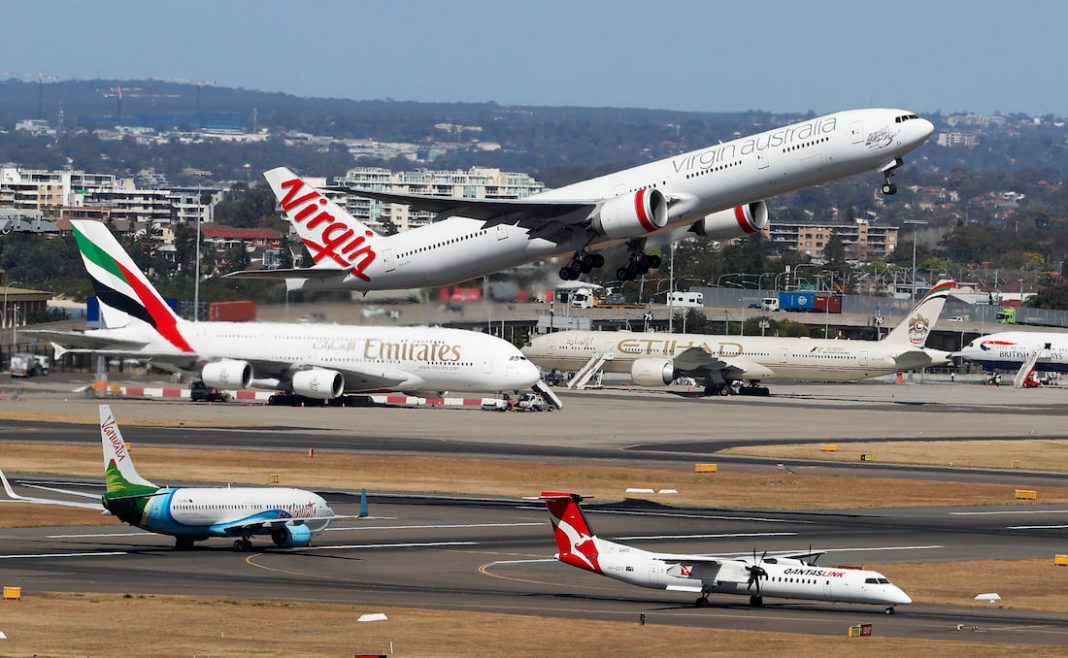Airline passengers typically pay half the amount for a ticket serviced by three carriers than if the route is flown by just one.
A federal task force has revealed a sector sensitive to competition, with research suggesting the “mere threat” of rivalry can be enough to lower airfares.
When serviced by a monopoly carrier, airfares average 39.6 cents per kilometre – a number that drops to 28.2 cents a kilometre with a competitor, and to 19.2 cents a kilometre when three providers are competing on the same route.
Prices per kilometre keep dropping as more competitors are added.
Presenting the early findings of the Competition Taskforce, set up last year, Assistant Minister for Competition Andrew Leigh says competition exerted “significant” downward pressure on airfares.
Dr Leigh says a lack of competition in the aviation industry is particularly problematic in a country so heavily reliant on flying to connect cities and reach other parts of the world.
“For a resident of Darwin, it is often cheaper to fly from Darwin to Singapore than it is to fly from Darwin to Sydney, even although the international flight is longer than the domestic one,” he will say in an address to the Chifley Research Centre in Melbourne.
He says the research adds to the “relatively limited evidence base” linking competitive pressures and prices in the industry.
The aviation sector came under fierce scrutiny last year following the government’s decision to block Qatar Airways from additional flights in Australia, with accusations the call was made to protect Qantas from a competitor.
The federal government has issued a review of the sector – including its competitiveness – with a white paper expected midyear to guide long-term policies.
The Australian Competition and Consumer Commission has also resumed monitoring the airline sector after the government agreed to reinstate its expiring powers.
ACCC chair Gina Cass-Gottlieb said more choice and competition kept downward pressure on airfares based on the watchdog’s assessments do far.
“These are questions we are going to be investigating further now that we have the continued role of monitoring airline services,” she told AAP.
In a speech later on Tuesday, Dr Leigh will say more than a dozen airlines operated in Australia before World War II, but from the 1950s to the 1980s, a duopoly prevailed, keeping prices high.
“Only with the deregulation of aviation in the late 1980s did flying become affordable for many middle-class families and small businesspeople,” he will argue.
“Australia’s aviation history shows the value of competition.”
The minister will also unveil new findings on mergers, coinciding with the Australian Competition and Consumer Commission’s crackdown on corporate marriages that lead to too much market concentration.
The analysis found mergers were extremely concentrated among larger firms and roughly two-thirds happen without the consumer watchdog’s knowledge.
About 1000-1500 mergers were taking place each year compared with the 330 the ACCC considered annually under the voluntary notification system.
The consumer watchdog has been pushing for mandatory notification and approval of upcoming mergers, with some firms thought to be pushing the boundaries of the voluntary set-up and offering up incomplete, incorrect and late information.
By Poppy Johnston in Canberra



